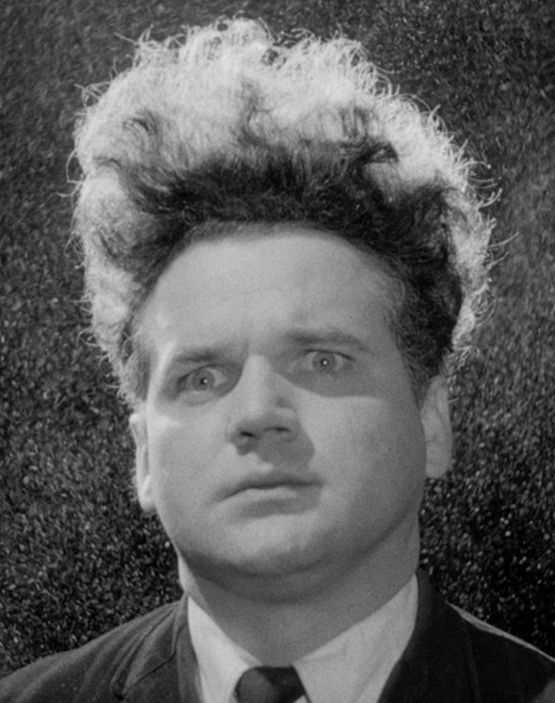Guys it’s been 8 months. It was a bad take.
I think in this case analogue is actually easier to read. You don’t need to actually read any of the numbers to know how fast you’re driving, you just look at the angle of the needle.
The human brain is great at things like this, and less good at reading numbers, which is much more learnt.
My 2019 Jetta has a 100% digital instrument cluster. It’s currently broken…just a black screen. It’s neat how reliable analogue instruments are.
The number of people on here who seem to think that an analog instrument cluster is connected directly to the things they’re displaying, rather than connected to the ECU computer. Or that a PWM servo motor is more reliable than a screen. News flash: if you lose power to either, you aren’t able to read it.
An well designed analog guage is easier to read out the corner of your eye, or at a quick glance. But that really only matters if you’re racing, and even then it’s dubious.
A poorly designed digital guage can be distracting at night, if they use a screen tech that has poor black levels, or have lots of bright elements on the screen at night. It basically shines a light at your face and interferes with your night vision. But most manufacturers are better than that, these days, it’s not much different than the light that illuminates your analog gauges.
So really it’s personal preference, and some people like to justify their preference with bullshit so that they can feel superior. YMMV.
I just want my speed and tach projected on the windshield. I feel like that’s not too much to ask as a standard safety feature since the tech is like decades old at this point.
This is now a feature in many modern cars! The Mazda CX5 has a cool HUD that displays speed and even navigation, for instance.
Yup! It’s commonly called a heads up display
I personally hate the digital cluster, I would rather have analog one with display in middle. I don’t find that analog cluster needs more time to read.
My old Scion had a digital one. I think it’s an aesthetic preference.
I find I never actually look directly at an analogue speedometer, you kinda just know from the angle of the needle what speed you’re doing
New to driving maybe?
That’s probably why digital displays still have analog speedometer options. At a glance it’s easier to tell what’s happening with your speed, rev count, and other levels like fuel.
But much of that utility is useful for manuals and ICE-powered cars.
Unfortunately because of the digital spedometer, the analog one usually suffers.
My mid-2010s c-class has an analog spedometer which is absolutely useless as it does not have a full needle and the fonts, spacing and colors are made to blend in with the interior instead of being readable.
All this makes me use the digital one, which is very distracting and usually lagging behind, especially when quickly accelerating.
Reading very-fast-changing data is probably the only good argument I’ve seen for the superiority of analog guages in modern cars. A fast changing digital display is impossible to read. But practically speaking, when the data is changing that quickly, typically precision isn’t important.
If car companies cared (which they clearly don’t) they could make digital displays better, by having a low refresh rate when there is low acceleration (to avoid distracting the driver), increase the refresh rate under heavy acceleration to display more current data, and apply some kind of effect to the fast changing digits to convey a sense of how fast they’re changing even if they’re changing too fast to read. Think of the odometer style altitude readout on old airplanes, where even if you can’t read the number you can tell wtf is up by how fast the numbers are spinning by.
This isn’t to say that digital guages are better. They’re just different. It’s a personal preference thing.
But you’re absolutely right that the analog guage has suffered from neglectful design in recent years.
Digital speedometer? Gross.
Wouldn’t it be constantly fluctuating between speeds one or two numbers apart? Unless your foot is magic or you’re in cruise control, lol. I feel like it could be distracting.
You could make like a circular shape on the screen with numbers correlating to the speed on different angles. Then maybe add some rectangle which points at the current speed and effectively changes the angle when the speed changes.
Oh wait…
Digital speedos average the speed over the last (eg) second and when it changes will usually do some form of animation between digits. This way you don’t get constantly fluctuating numbers.
As for analogue versus digital. It depends how you think of a speedo. If you think of it as a percentage of maximum then analogue is best (like a fuel gauge) but if you think of it as needing to know your ‘exact’ speed (like temperature) then digital is best.
Car manufacturers won’t spend extra on a fancy feature unless they can’t sell without it. That’s why most cars have such nasty low-res screens for the entertainment system, when a nice high res one (like the one you have in your phone) would only cost a few quid more.
It look cool
This must be related to people in their 20’s not knowing how to read a traditional clock anymore.
Yeah, probably not. It’s just that digital is better, analog is just what folks are used to and that for some people means it’s automatically better. I grew up with analog, my first cars had analog and if I’ve never seen it again, I wouldn’t miss it.
I have a Yaris with both.
I had a VW Tiguan that had both, but the digital one didn’t poll very often so it was incredibly unreliable. My Audi Q7 has both too, but the analog one is on a digital display, which is kind of weird to think about. Like a computer using an analog clock.
I suspect speedometers are never completely accurate. So instead of an exact number, they’ll use a needle and you can guess how fast you’re approximately going
This. They are actually not accurate because of regulations.
Here is an alternative Piped link(s): https://piped.video/watch?v=74rbyMmjkCU
Piped is a privacy-respecting open-source alternative frontend to YouTube.
I’m open-source, check me out at GitHub.
I see all these things about the digital gauges breaking on them and I find it pretty funny that out of every car I ever had/had access to, only one ever had the speedometer fail, and it was an analogue one. The needle itself on the display broke and would just swing back and forth wildly. I used my phone to get a speedometer app that used the gyro in the phone until I could get it fixed.
















